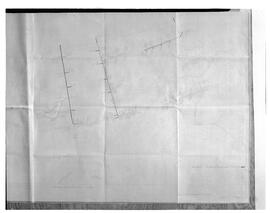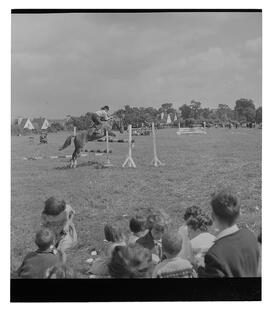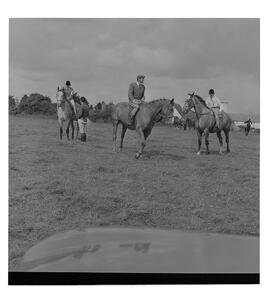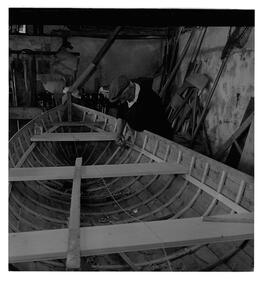Black and white negative of Golden Vale performing a céilí inside the cottage at the Bunratty Folk Park.
Sin títuloBlack and white negative of the passengers from the press and the crew on the steps of the Aer Lingus plane on its inaugural flight to Paris, France.
Sin títuloBlack and white negative of Mr Childers laying brick at the Shannon Airport helicopter base. Negative missing.
Sin títuloBlack and white negative copy of plans for the Shannon Development Industrial Site, for. P. Donnelly.
Sin títuloBlack and white negative copy of plans for the Shannon town expansion, for. P. Donnelly.
Sin títuloBlack and white negative of a rider and horse jumping in the Clarecastle Horse Show.
Sin títuloBlack and white negative of a horse and rider jumping in the Clarecastle Horse Show, with another horse and rider in the foreground.
Sin títuloBlack and white negative of three horses and their riders at the Clarecastle Horse Show.
Sin títuloBlack and white negative of a man sanding and building a boat at Mount Shannon.
Sin títuloBlack and white negative of the scenic view in Mount Shannon of the water, featuring a group of children swimming and playing on the beach.
Sin título





